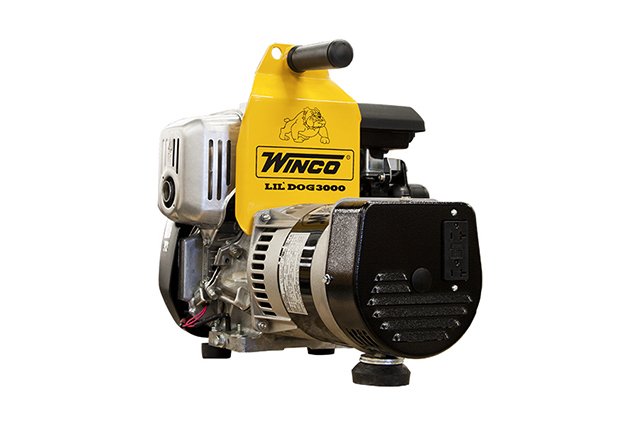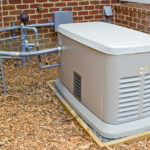Generators 101: Everything You Need To Know
You might think that electrical generators are complicated devices. Perhaps just looking at one gives you a migraine as you try and figure out how each different piece works in unison.
Well, you might be shocked to know that generators aren’t as complex as they look. When you were in school, you might have dabbled with magnets, dragging metal objects around using the force – er, the magnetic force. Well, that’s quite a good example of how even the most powerful and technologically advanced generators operate.
But wait, we’re getting ahead of ourselves. Before we learn how generators work, we need to delve back into the past and discover how they came to be.
A Brief History of The Generator
There’s no need to dive in deep here but is interesting to note the generators we use today were created in 1831 by a scientist named Michael Faraday. His creation was expectedly primitive but for the time remarkable. The device – made from a neural material, a coil of wire and a bar magnet – was used to generate an electric current. After that the development of the generator moved through a variety of stages:
- Faraday created the first electromagnetic generator.
- In 1832, Hippolyte Pixil developed the first magnetoelectric generator.
- Development was stunted through the 18th century due to electricity not being available.
- Dynamos were developed in Europe leading to further developments including the work of Westinghouse and Siemens who began commercial generator productions.
Wait, How Do They Work?
Now that you know some of the history let’s look at how these devices work. We’ve already touched on this briefly examine Faraday’s creation and the magnets you might have played with at school. In its most basic form, a generator is a device that pushes a magnet towards a wire to produce a flow of electrons. This force and the action behind it can take a number of different forms, but the idea behind the movement remains.
That’s what happens when you push a piece of metal with a magnet. It causes the electrons to realign, and this allows the magnet to push the metal object in a direction. So, the best way to explain this is:
- A magnetic field causes electrons in metal to move and realign.
- Move electrons through a metal wire as Faraday did and you create a magnetic field around it.
- The power is determined by the number of electrons and the pressure moving them that creates power.
This is what we measure when we talk about terms like amperage, current, amps or voltage. The number of electrons flowing through the current is referred to as the amperage. This is measured as amps. Meanwhile, the pressure is measured in volts. Now you know what the different measurements that explain the power of an electrical generator are actually referring too.
How We Use Generators To Produce Electricity
We use power generators for all sorts of different purposes including:
- Home power
- Factories
- Businesses
We use generators to create electricity, and we do that on a massive commercial level. Think back to Faraday’s spectacular invention. When the coils turned between the poles of the magnet, that device produced electricity. Of course, Faraday’s device worked by hand. To create electricity on a commercial scale, we need a much more powerful source. The first plant to produce electricity using a generator was opened in 1895. While our understanding has evolved once again the principles remain:
- Building a dam, water flows through a narrow area, towards the turbine.
- The shaft of the turbine connects to the generator, and the water pushes it around.
- The copper coils rotate producing electricity which runs to homes and businesses through power lines.
This isn’t the only way to produce electricity using a generator, but it was the first solution. Today a wide range of options are available including steam and even controlled nuclear reactions.
Other Types Of Generators
There are generators that are used for commercial and personal use. These days, you can purchase portable generators that are ideal for camping and providing power on the go. Back up generators can be used to make sure that the lights stay on when power in a home goes off. Of course, the most important backup generators are used in public buildings where a constant supply of power is essential like hospitals.
Generators are used in business as well to power everything from spray guns to construction equipment and lighting. It’s often advised that every business owner invests in a generator, just in case the lights do go out at an inopportune moment. With a generator, businesses can stay operational and productive. Obviously, this is more important for some industries than others. If the power fails in a food business, a lot of produce can quickly become unusable, and a business can take on a heavy cost. With a generator, this is no longer an issue, and the assets can be protected. The main reason for using generators are:
- Backup power supplies
- Mobile business use
- Mobile personal use
- Additional comfort
Choosing The Right Generator
Choosing the right generator is crucial, particularly if you are purchasing it to power a particular appliance. You might be buying a generator for an RV or construction equipment. Here’s what you need to know when purchasing a generator to power an appliance or piece of equipment:
- Motors will require three times their noted wattage to start.
- You will find the wattage on the equipment’s nameplate.
- Calculate the running watts by multiplying the volts by the amps noted on the device.
- Calculate the starting watts by multiplying the running watts by 3.
- The final number will tell you the generator wattage you need.
Conclusion
It’s not an exaggeration to say that generators are one of the most important inventions in the world. This piece of equipment can keep businesses profitable, provide security solutions and even save lives. When you need to purchase a generator, it can be overwhelming, particularly if you don’t know how they work. Now that you do, you should find it far easier to pick the right generator for your purposes.
If you are planning to invest in a generator, contact us. We can guide you through the process, assess you and provide more details about what your best option is.






